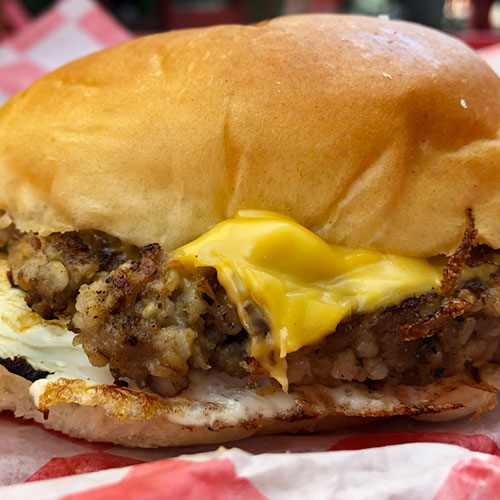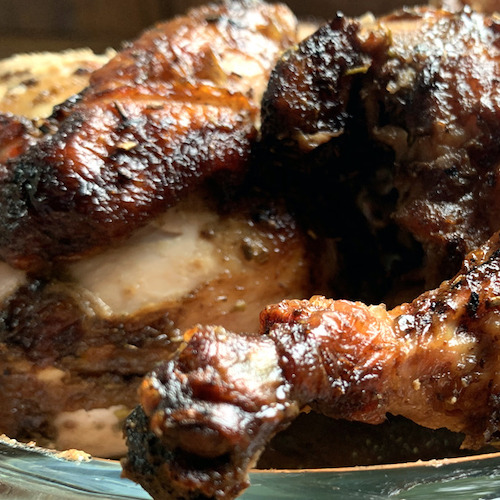For twenty-three years and eight months, from 1996 to 2020, I wrote about food and dining for the Cincinnati Enquirer.
I confess now that I had no idea what I was doing when I started, and that I spent a lot of time scared and uncertain despite voicing strong opinions. But the job became my own. One moment of insight came from a talk I gave, several years in, to a women’s group at a country club on the east side of town. After I shared my thoughts, I took questions. One woman, who I’m pretty sure was married to a top executive at a company downtown, stood up and said that she thought the problem with our dining scene was that it didn’t cost enough. She said that I should be holding restaurants to much higher standards than I did in my weekly reviews.
There were gasps from around the room. Then, lots of vocal disagreement, and assurances that the rest of them thought my reviews were just fine. Cost more? Eating out was expensive enough, the rest of the room thought. I did, in a way, agree with the questioner. Great restaurants take money. Cincinnatians, even the rich ones, are known to be a little cheap, which can be frustrating to anyone who wants restaurants to innovate and serve at the highest level. People pay the price in New York and Chicago. And yes, a newspaper critic’s role could be to help raise the standards of the scene she covers through frequent chastisement.
Then, with a sudden clarity, I realized that I was not on her side. I was with the scandalized ladies, and not just because they came so gallantly to my defense. That moment helped me come up with a philosophy, if that isn’t too grand a word to describe the worldview of a daily newspaper features writer: I decided to stay provincial. I was interested in what we had, not what we didn’t have. While I’ve had many food experiences outside Cincinnati that helped form my tastes, I didn’t care one bit about comparing our city to others ten times our size, or even to other cities in the Midwest.
Since I could hardly limit myself to reviewing new fine-dining restaurants fifty-two times a year, I ate and thought about our food at all levels, from chili parlors to chain restaurants to innovative independents. In my first years on the job, in the mid-nineties, I ate a lot of iceberg lettuce. An emphasis on value meant plenty of food for your money, which meant me groaning as I drove home, wondering how and why I’d eaten half a plate of Jack Daniels pork chops or Mardi Gras Pasta.
At the time, we had a handful of Thai restaurants, just a few third-wave coffee shops, no restaurant district, no trendy barbecue, no regional Italian. But it was hardly a wasteland. In my first review, I covered the sizzling stone bowls at Riverside Korean. At the time, Jean-Robert de Cavel was upholding Cincinnati’s long tradition of French fine dining at La Maisonette, and we had a truly excellent steakhouse in Jeff Ruby’s. I found that I had plenty to do, eat, and write about.
That moment helped me come up with a philosophy, if that isn’t too grand a word to describe the worldview of a daily newspaper features writer: I decided to stay provincial.
Meanwhile, a national obsession with food was beginning to take hold. The Food Network had launched in 1993. I heard people talking about a cult-favorite show from Japan, The Iron Chef. I have a lot of reservations about modern food television and its unrealistic depictions of home cooking, but it woke the sleeping foodie in a lot of people: men who’d never cooked, twenty-somethings who hadn’t been big diners-out, older Cincinnatians on the more conservative West Side. (“Why is everyone in this restaurant old?” my sister asked me when visiting from the Bay Area.)
Critiques of the modern food system helped spawn the locavore movement, explained compellingly in Michael Pollan’s “The Omnivore’s Dilemma.” Shows like Guy Fieri’s “Diners, Drive-ins, and Dives,” building on the earlier work of Roadfood’s Jane and Michael Stern, interested a new generation in regional Americana. Anthony Bourdain, with his particular charisma, transported Midwestern diners to tables in Cambodia, Morocco, and Singapore. The idea of getting dressed and going out for special occasions gave way to casual and frequent restaurant dining. Everyday spots became more serious. Restaurants and bars became effective tools of urban revitalization (and gentrification). Those were national trends. What I loved, and what vindicated my philosophy, is that we did it all our way in Cincinnati.
We didn’t waste time reproducing fads from elsewhere or opening restaurants that our community couldn’t or wouldn’t support. I remember reading a story about a restaurant where guests lounged on beds while eating and thinking, “I’m glad other people can weed out the dumb fads so we don’t have to.” Our centuries-old city has enough culture, enough history, enough distinctive architecture and local flavor, to offer inspiration anywhere a person looks.
The regional-food trend worked well here, since stubborn Cincinnatians had clung to a number of quirky dishes and brands while the rest of the country had changed: our Cincinnati-style brats and metts, our Greek-American “chili,” our Graeter’s Ice Cream. All got fresh attention. Goetta, a breakfast sausage of pork, beef, and oats, caught chefs’ attention and appeared on menus in surprising new ways. Grippo’s, our highly distinctive and hard-to-resist local barbecue chips, were crushed and sprinkled over trendy dishes like magic dust.
But those were just signifiers, really—a sort of secret handshake that said, “We love our city.” We have more fundamental sources of inspiration. The local food movement found fertile ground in this area, surrounded as we are by farmland. Downtown chefs explored terroir with vendors at Findlay Market, the public market that has served the city since 1855. Brewers looked to Cincinnati’s pre-Prohibition brewing history, and to the crumbling brewery buildings that still stood over nineteenth-century lagering tunnels in the old German neighborhood of Over-the-Rhine.
The push to save Over-the-Rhine, funded by public and private money, was the biggest thing to happen to Cincinnati dining in my years at the Enquirer. New, independent restaurants opened in the historic buildings, creating an energy that attracted locals and tourists. Millennials loved it. City boosters loved it. It became the place to take out-of-towners, to showcase what is unique, beautiful, and gritty about the Queen City. Most of the restaurants, with their poutine, charcuterie plates, and beet salads, would probably fit right into a neighborhood in Brooklyn or L.A. But they were clearly our own. I’ve never had a snobby server on Vine Street.
Chefs and restaurateurs who came here from elsewhere didn’t get very far with the attitude that they were going to teach the rubes something. I saw it. They had to want to fit in. People here have highly sensitive antennae for pretentiousness. Personally, I love it when people try just a little bit too hard, but I think we ended up with concepts that served our clientele. Cincinnati is a city of geographically and culturally diverse neighborhoods, and as our dining scene grew, restaurants began opening in the suburbs where many downtown diners lived, uniquely suited to their locations. A neighborhood getting a new coffee shop, or later a brewery or a clever restaurant, was occasion for celebration and pride.
And I got to write about all of it.
While we’re talking about changes in the past twenty-five years, I should say that they were even more profound in the news business, but in the other direction. When I started, there were thirty people in the features department alone. We had a drama writer, a television writer, a visual arts critic, and both popular and classical music critics. The news operation had several bureaus, plus layers of editors and copy editors. When I left, I was the only staff reporter still dedicated to a features beat, which says something about the condition of mass media—and about the importance of food and restaurants to a city’s identity. Writing this on the edge of the pandemic, I’m hoping the past year doesn’t have the same cratering effect on independent dining. Looking back at a quarter century of hard work and passion, I feel so privileged and proud to have been able to do what I did during a time of such delicious growth and change.




